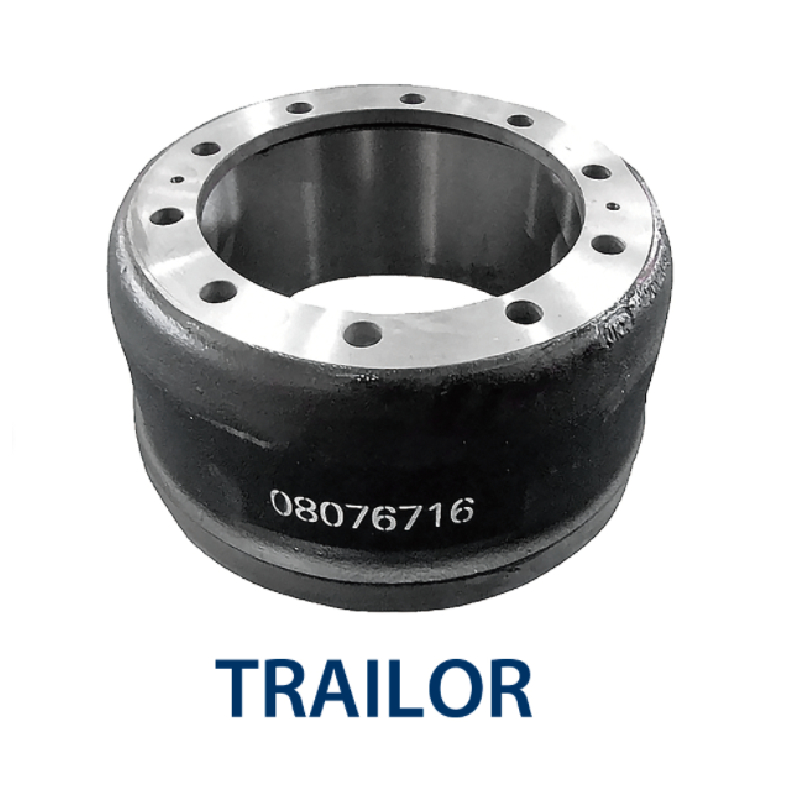Nov . 18, 2024 06:02 Back to list
Understanding the Components and Function of Brake Drum Systems in Vehicles
Understanding Brake Drum Diagrams and Their Importance in Automotive Engineering
Brake systems are an essential aspect of vehicle safety, and understanding their components is crucial for automotive engineers and technicians. One such component is the brake drum, a vital part of many vehicles' braking systems, particularly those with drum brakes. To appreciate the functionality and structure of this component, studying a brake drum diagram can be extremely beneficial.
What is a Brake Drum?
A brake drum is a cylindrical component that rotates with the wheel of a vehicle. When the driver applies the brakes, friction material within the drum creates resistance by pressing outward against the internal surface of the drum. This process slows down the vehicle and ultimately brings it to a stop. Brake drums are typically found in older vehicles, although they are still used in some modern applications due to their effectiveness in certain conditions, especially in rear brakes.
Components of a Brake Drum
A typical brake drum diagram will illustrate various components that work together to facilitate the braking process. The primary elements visible in such diagrams include
1. Brake Drum The outer shell that rotates with the wheel. 2. Brake Shoes Curved pieces of metal with friction material bonded to them. These are positioned inside the drum and push outward against the drum wall when brakes are applied. 3. Wheel Cylinder A hydraulic component that pushes the brake shoes apart when the brake pedal is pressed. 4. Return Springs Steel springs that help retract the brake shoes back to their resting position once the brake is released. 5. Adjuster A mechanism that keeps the brake shoes positioned correctly for optimal contact with the brake drum.
By closely following a brake drum diagram, one can better understand how each part plays a role in the braking process.
brake drum diagram

How Brake Drums Function
When a driver applies the brake pedal, hydraulic fluid is sent to the wheel cylinder. This pressure forces the cylinder pistons outward, causing the brake shoes to push against the interior surface of the brake drum. The resulting friction slows the rotation of the drum and, consequently, the wheel.
It's also essential to note that the efficiency of drum brakes can be affected by the heat generated during braking. Brake drums are designed to dissipate heat effectively, but if they become overheated, it may lead to brake fade—a reduction in braking performance. Recognizing and addressing these issues are crucial for maintaining vehicle safety.
Maintenance and Inspection
Regular inspection and maintenance of brake drums are vital for ensuring vehicle safety. Technicians often refer to diagrams to verify the alignment, condition, and proper functioning of each component. During inspection, they look for signs of wear, such as scoring or cracking on the drum surface and deterioration of the brake shoes. Brake adjustments are also critical; they ensure the necessary clearance between the shoes and the drum is maintained, improving safety and efficiency.
Conclusion
Understanding brake drum diagrams is integral for those involved in automotive engineering and maintenance. These diagrams provide a clear representation of a complex system that plays a pivotal role in a vehicle's safety. Brake drums, alongside their various components, work together to provide effective braking performance, and keeping them in proper working order is essential for the overall safety of any vehicle.
As technology progresses, the emphasis on advancing brake systems continues, but the fundamental principles underlying brake drums remain vital. Studying and comprehending these components through diagrams not only enhances knowledge but also promotes a proactive approach to vehicle safety. Whether for education or professional practice, mastering the intricacies of brake drum systems is an invaluable asset in the automotive industry.
-
HINO Industrial Solutions - ¡Ң���ຽ��е��������˾ | Advanced Technology&Reliability
NewsJul.13,2025
-
HINO Industrial Efficiency-Jiangsu Hino Industrial|Productivity Optimization&Cost Reduction
NewsJul.12,2025
-
HINO-¡Ң���ຽ��е��������˾|Advanced Industrial Solutions&Energy Efficiency
NewsJul.12,2025
-
Premium Brake Drum Iveco – Durable Drum Brake Drum & Brake Shoe Solutions
NewsJul.08,2025
-
High-Performance Brake Drum Liza for Enhanced Safety Reliable Drum Brake Drum & Brake Shoe Solutions
NewsJul.08,2025
-
High-Quality Brake Drum MAZ – Durable Drum Brake Drum & Brake Drum and Brake Shoe for Optimal Performance
NewsJul.07,2025
